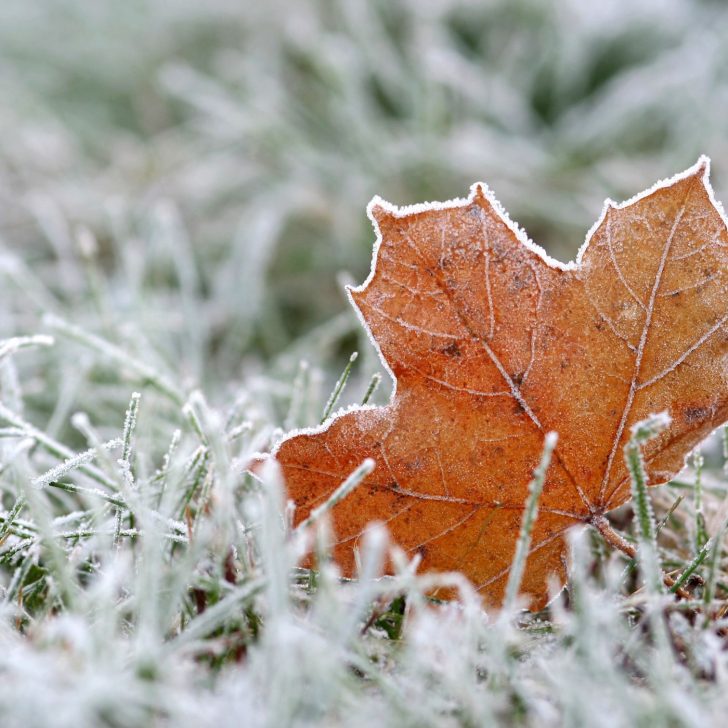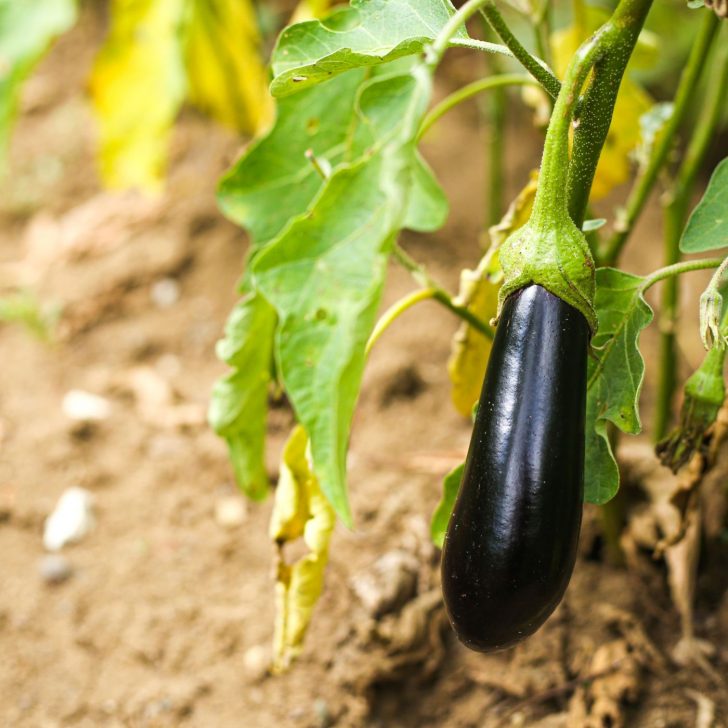March is a difficult month for newcomers who are new to gardening in Florida. The hotter temperatures and humidity can make it difficult to know what plants will thrive in the garden. In this article, we will highlight what to plant in March in Florida. Following these tips can help you have a bountiful harvest, even during the hotter months.
Timing is everything when it comes to gardening in Florida. This can make spring a very confusing time for gardeners who are new to the area. They will often stick to planting recommendations based upon northern states or those on the backs of seed packets, and later wonder what went wrong when their plants are plagued with pests and disease.

This doesn’t mean that we should lose heart with gardening in Florida, especially in the spring. March is a busy time in the Florida garden.
Table of Contents

Know Your Average Last Frost Date
March is the beginning of warm months here in Central Florida (USDA zones 8a – 10a). In my town of Brooksville, the average last frost date is March 8. We shouldn’t get another freeze after this date, but it’s best to wait two weeks to be sure.
That means that I can plan on March 22 to be a good day for cutting back freeze damage on perennials and direct sowing frost sensitive plants like squash and beans.
Frost dates can vary quite a bit even an hour north or south from my address, so it is important to know the average first and last frost dates based upon your zip code.
Should You Start from Seed or Seedling?
A lot of seeds for the spring garden are started before March. These include tomatoes, peppers, and eggplants. In general, it is too late to start them from seed in March because they need a long growing season and usually need to be harvested or established by June.
The exception may be some cherry tomato plants because they handle the heat better than larger varieties. Notably, the variety most likely to survive Florida summers are Everglade cherry tomatoes.
You can still grow tomatoes, eggplants, and peppers if you have not started them from seed, but it is best to purchase seedlings from a local nursery. If you already have seeds on hand, you can save them and plan to start them in July for your fall garden.
Many short season vegetables such as lettuce, greens, carrots, and radishes can be started from seed in March, but the focus turns to varieties that are more heat tolerant.
Any vegetables that are started from seed in March should be started with the focus of your summer garden in mind.

Gardening Recommendations and Tips For March
With the increase of warm temperatures in March, there is also an increase of insects and caterpillars in the garden. Most notably, March tends to be when tussock moth caterpillars emerge. One of their host plants are oak trees, so you are likely to see a lot of them if you live in or near an oak forest.
Established perennials can handle pest damage and usually come back stronger afterwards, but they can decimate tender seedlings.
Many Florida gardeners have opted to cover their vegetable gardens with a fine mesh such as tulle to keep pests off of their plants. This can be a more labor intensive option because plants such as squash and cucumbers will need to be hand pollinated.
Organic sprays such as spinosad (for caterpillars and aphids) and cold pressed neem oil (for other insects and fungal spores) will take care of most pests, but can also be harmful to beneficial pollinators. It is best to apply them in the evening when bees and butterflies are less active.
Also, do not spray your herbs as many culinary herbs serve as host plants for butterfly caterpillars.
Starting you first garden? Check out 10 Tips for Growing an Amazing Homestead Garden for more gardening advice.
What to Plant in March in Florida
There are a number of different varieties that will tolerate more heat and humidity. Picking the correct variety will be vital in your success. Some of Florida’s most popular types are listed below.

Vegetables You can Start from Seed
If you want to know what seeds to plant in March in Florida, then it’s best to focus on heat-tolerant varieties. Some of the most popular types of vegetables that can be grown in Florida during the month of March include:
- Amaranth – A heat-tolerant vegetable that can be used in salads or cooked dishes. Choose varieties such as Lu Hsien Green Leaf Amaranth rather than amaranth varieties grown for seed.
- Bush Beans – Bush beans can be either snap beans (formerly called string beans because of their fibrous pods) or shell beans. ‘Bush Blue Lake’, ‘Contender’, ‘Roma II’, ‘Provider’, and ‘Cherokee Wax’ (a yellow wax type) are some great snap varieties for Florida gardens.
- Cantaloupes – Cantaloupe is a warm season species that is adapted to dry conditions, but requires consistent moisture for acceptable yield. The plant needs a long, frost-free season with plenty of sunshine and heat, and relatively low humidity. The different varieties of cantaloupes grown in Florida are Ambrosia, Honey Rock, Galia, Athena, and Minnesota Midget Melon. These melons are typically grown in Central Florida and the Panhandle.
- Carrots – Carrots are a cool weather, fast growing crop that can be direct seeded into the garden in March. Choose shorter, faster-maturing varieties such as Little Finger Carrots. You can also plant more heat tolerant varieties such as Shin Kuroda Carrots.
- Chayote – Chayote is a type of squash that is native to Mexico. The fruit has a mild flavor and can be eaten raw or cooked.
- Sweet Corn – Some varieties of white and yellow corn that perform well in Florida are ‘Silver Queen‘ (white), ‘How Sweet It Is’ (white), ‘Sweet Ice’ (white), ‘Sweet Riser’ (yellow), and ‘Early Sunglow‘ (yellow).
- Cucumbers – Cucumbers grow well in the spring, but usually struggle in Florida summers. They are also prone to powdery mildew and pickle worms. Some varieties that do well in Florida are Bush Slicer, Cherokee, Dasher II, Eureka, and Sweet Success. Asian varieties such as Tasty Green Cucumbers have also shown to have good disease resistance and heat tolerance.
- Luffa or loofah – Luffas are warm-season, climbing vine that is popular to grow in Florida during the summer because of it’s heat tolerance and long growing season. A member of the cucumber family, it can be eaten when young as an alternative to zucchini, but is most commonly known for its fibrous interior, which is useful as a body sponge when dried.
- Okra – Okra loves heat and humidity. This is one of the few veggies that grows well in Florida through the summer. Seeds should be planted when evening temperatures are in the mid fifties, in a sunny location with well-drained soil. Harvesting may begin approximately 60 days after planting, when pods have reached approximately two to three inches in length.
- Green/Bunching Onions – Green Onions can be grown in containers or in the ground and typically mature in about 60 days. Plant in morning sun, afternoon shade.
- Peanuts – In North and Central Florida, you can plant peanuts from March through May. Plant raw peanuts in the shell 4 to 6 inches apart and 2 to 4 inches deep, in rows spaced 24 to 36 inches apart. Garden soil should be prepared the same way you would when planting any other vegetable.
- Pumpkins – Pumpkins do best when planted in late March and early April, with some varieties maturing in as little as 100 days. Those pumpkins grown between late April and July are smaller and are more prone to viral disease, fungal disease, and fruit set difficulties. ‘Howden‘ and ‘Jackpot’ are the best large pumpkin varieties for growers in Florida. Some other large variety pumpkins that grow well in Florida are ‘Big Max’, ‘Big Moon’, ‘Jack O’Lantern’, ‘Spirit’, and ‘Funny Face’.
- Radishes – Radishes grow quickly and can be harvested in enough time to avoid the summer heat. Radish varieties that do well in Florida are Cherry Belle, White Icicle, Sparkler, Champion, and Daikon.
- Southern Peas – A number of field pea cultivars are referred to as southern peas. Also known as cowpeas, these legumes are said to have originated in West Africa’s Niger River Basin and traveled by trade and migration throughout Africa, India, and ancient Greece and Rome. Crowder, cream, and black-eyed are the three types of Southern peas. Crowders have a strong flavor, whereas cream peas are more delicate. The taste of black-eyed peas is somewhere in between.
- Summer Squash – The name summer squash is used to describe squashes that have a thin, edible skin. Zucchini, yellow squash, crookneck, and pattypan are the most common summer squashes grown in Florida. Summer squashes are usually bush types and have less of a spreading, vining habit than winter squashes. They can be prone to powdery mildew and vine bores. You can find hybrid varieties that are resistant to powdery mildew. Wrapping the stems of young plants with foil can prevent against vine bores.
- Spinach Alternatives – True spinach does best growing during Florida winters, but there are a number of spinach alternatives that we can grow through the summer. Some of the most common alternatives include Malabar spinach, New Zealand spinach, Egyptian spinach, Okinawa spinach, Longevity spinach, Perpetual spinach swiss chard, and moringa. While not true spinaches, they can keep you harvesting leafy greens all summer long.
- Watermelon – Watermelon plants grow best when temperatures during the day are between 70 and 85 degrees Fahrenheit, although they can handle daytime temperatures up to 90 degrees. Gardeners in Central and South Florida can plant from January through March. In Central Florida, watermelons can be planted again in August, and in August and September for those in South Florida. There are a few varieties of watermelon that do particularly well in Florida. If you are planning to grow the popular smaller, icebox-sized watermelons, look for ‘Sugar Baby‘ or ‘Mickeylee’ varieties. If you have the space and desire to grow larger watermelons look for ‘Jubilee’ (Florida Giant), ‘Crimson Sweet‘, or ‘Charleston Grey 133’.

Vegetables You can Transplant as Seedlings
There are several vegetables that can be planted in March, but require too long of a growing season to be started from seed. If you have not started these plants from seed before March, you will need to purchase seedlings from a local nursery:
- Chinese Cabbage – Chinese cabbage can be found in two types, heading (Pekinensis) or open-leaf (Chinensis). Open-leaf types form looser heads, giving you lovely large leaves to look at in your garden. Bok Choy is an open-leaf type of Chinese cabbage, while Napa and Michihili form tighter heads. It is more heat tolerant than traditional cabbage. Look for varieties like Napa, Michihili, bok choy, baby bok choy, joi choi, pak-choi, or the pak-choi hybrid called toy choi.
- Eggplants – Eggplant likes warm weather but that doesn’t mean that it likes our Florida summers. The best time to plant is when our spring time starts to heat up but before the summer heat gets too intense. Thai and Asian varieties such as Ichiban, Shoya Long, and Ping Tung Long handle Florida summers the best and tend to be prolific producers.
- Kohlrabi – Kohlrabi will survive in temperatures ranging from 70 to 80 degrees Fahrenheit. Kohlrabi growth is stunted when the temperature rises above the low to mid-80s. Varieties of kohlrabi that will grow well in Florida are Early White, Vienna, Grand Duke, Kolibri, Kossak, Purple Vienna, and Superschmelz. It is usually ready for harvest in 50-60 days from transplant.
- Heat Tolerant Lettuce – Most vegetables will start to bolt as the temperature rises, but there are a few that can handle it better than most. The key to to harvest the leaves rather than waiting for the entire plant to form a head. Harvesting in the mornings while the temperatures are still cool can also prevent the leaves from becoming bitter. Lettuce varieties that you can transplant in March include Buttercrunch, Bibb, Deer Tongue, Bambi, Parris Island, Black Seeded Simpson, and Red Sails.
- Peppers – You can plant peppers outside in Spring once the night temperatures are consistently above 55 degrees. The soil should be really warm. If the evenings are still chilly, make sure you place your peppers in an area that receives at least 8 hours of full-sun light each day. If your sweet peppers persist into late summer, provide them with at least some shade during the day to avoid sunburn. Growing peppers in fabric grow bags will allow you to move them around the garden depending on the time of the year.
- Swiss Chard – Swiss chard is heat tolerant when compared to spinach or lettuce, making it a favorite in Florida gardens. It’s simple to cultivate, and the vibrant stems lend an attractive touch to the garden. Mixes of multiple chard varieties are often so colorful that they are marketed as “rainbow chard.” ‘Bright Lights’, ‘Bright Yellow’, ‘Fordhook Giant’, ‘Lucullus’, and ‘Red Ruby’ are all varieties that do well in Florida. Both Swiss chard’s leaves and stems are edible. Harvest leaves while they are young and tender. Chard is ready to harvest 40-60 days after seeding, or once leaves reach 8-10 inches long. Pick the outer leaves a few at a time for a long, continuous harvest.
- Tomatillos – Tomatillos (Physalis ixocarpa) and husk tomatoes (Physalis pruinosa or Physalis pubescens) belong to the same family as tomatoes, Solanaceae. Other members of this important family include potato, eggplant, peppers, and petunias. Husk tomatoes are also known as ground cherries, strawberry tomatoes, Chinese lanterns, bladder cherry, aklekengi, and Cape gooseberry. These names allude to a common feature of tomatillos and husk tomatoes: husk-enclosed fruits. Both species produce small fruits, similar to cherry tomatoes, surrounded by husks that resemble paper lanterns. Tomatillos, unlike tomatoes, do prefer to cross pollinate. Grow several plants in your garden for a consistent harvest.
- Tomatoes – It’s important that you don’t wait too long to plant your tomatoes, since they need enough time to develop and produce fruit before the summer heat becomes overwhelming. Once average nighttime temperatures climb above a certain point (typically about 80 degrees), large-fruited tomatoes will continue to flower but will stop setting fruit. The exceptions to this rule are cherry and grape tomatoes, which typically perform well throughout Florida summers.
Final Thoughts
When it comes to gardening in Florida, timing is crucial. This can lead to spring being a difficult time for newcomers who are new to the region.
This does not imply that we should give up hope with gardening in Florida, especially in the spring. It’s a hectic time for gardeners in Florida during March.
There are several varieties of veggies that can endure higher temperatures and humidity. Choosing the correct variety can greatly improve your success.
